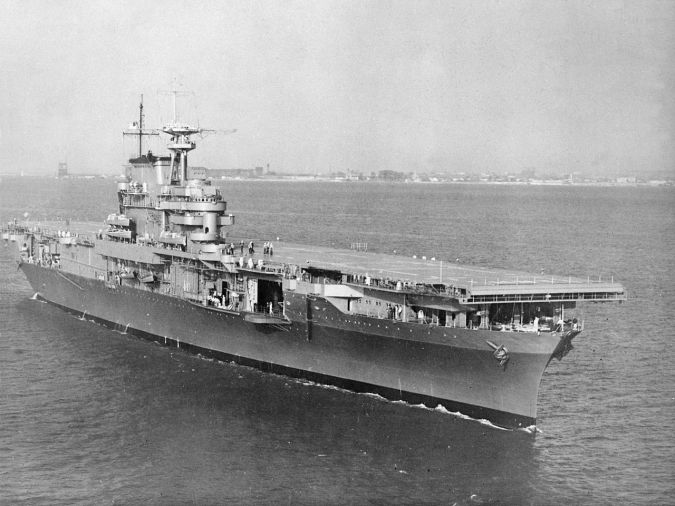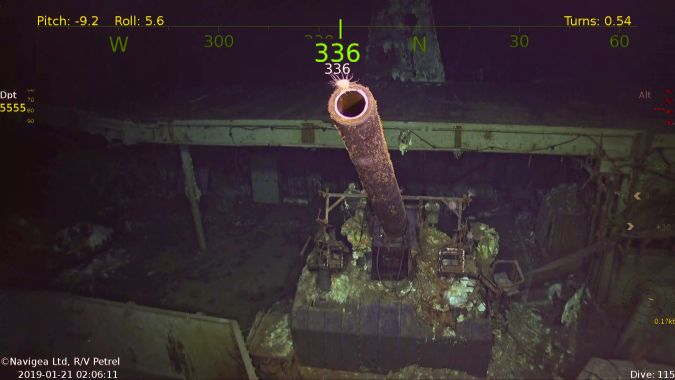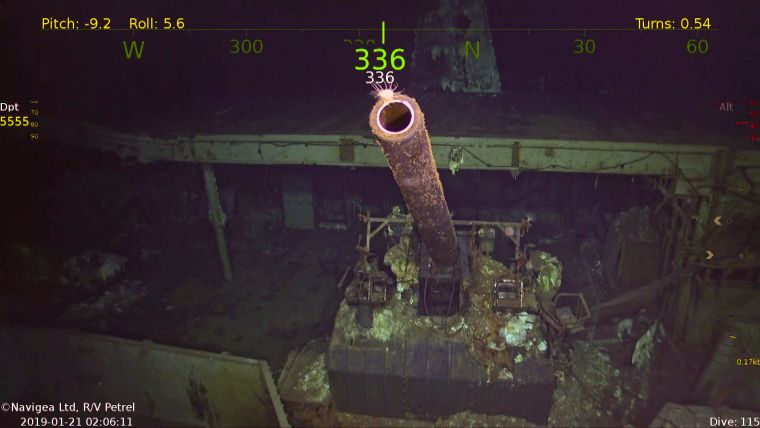How AUV and ROV Technology Played a Key Role in Historic Shipwreck Discovery
WWII Wreck Located in South Pacific
An underwater research and exploration vessel has played a key role in locating a major US aircraft carrier lost during World War Two. The R/V Petrel, owned and operated by philanthropist Paul Allen, discovered the remains of the USS Hornet on the seabed, 5,330 metres below the surface of the South Pacific Ocean near the Solomon Islands in late January 2019. This article looks more closely at the importance of underwater technology in enabling this historic find.
The R/V Petrel is an expedition ship belonging to Vulcan Inc, a company founded by explorer and philanthropist Paul G. Allen, co-founder of Microsoft who died in October 2018. It was first used in August 2017 to locate the wreckage of the USS Indianapolis, another ship that sank during WWII after being struck by Japanese torpedoes. Having been lost in July 1945, Indianapolis was located at a depth of 5,500 metres in the Philippine Sea. Since then, the team has been dedicated to finding and documenting historic shipwrecks with a focus on World War Two. In another success, R/V Petrel located the aircraft carrier USS Lexington found at 2,023 metres in the Coral Sea in March 2018.
Pivotal Role in History
The crew of the 250-foot R/V Petrel were keen to locate the USS Hornet (CV-8) to honour the memory of Paul Allen, who was particularly interested in aircraft carriers, but also because of the Hornet’s involvement in many pivotal moments in naval battles. For example, the Hornet is well-known for launching the important Doolittle Raid – the first airborne attack of Japanese homeland targets including Tokyo – in April 1942 and for its role in winning the Battle of Midway in June 1942. Ultimately, the Hornet became irreparably damaged by enemy torpedos and dive bombers in the Solomon Islands campaign, during the Battle of the Santa Cruz Islands on 26 October 1942. Faced with an approaching Japanese surface force, the Hornet was abandoned, but not before 140 sailors from the crew of nearly 2,200 had lost their lives. The vessel was later torpedoed and sunk by approaching Japanese destroyers.
Now, over 75 years after vanishing beneath the waves, USS Hornet has been relocated at a depth of almost 5,400 metres below the surface. The ten-person expedition team on R/V Petrel started on their mission by analysing data from national and naval archives, including official deck logs and action reports from other ships engaged in the final battle. They arrived at a starting point for their search by plotting positions and sightings from nine other US warships in the area at the time.

Depth-rated to 6,000 Metres
R/V Petrel is currently the only privately owned vessel equipped to explore down to depths of 6,000 metres. It is fitted with ultra-high-tech underwater equipment including an autonomous underwater vehicle (AUV) – the Remus 6000 – and an echosounder package consisting of one Kongsberg EM710 hull-mounted multibeam system, one Kongsberg EA600 hull-mounted singlebeam system, one ROV-mounted BlueView M450 2D multibeam imaging sonar and one EdgeTech 2205 AUV-mounted sidescan array (75/230kHz with interometric bathymetry). The ROV is an Argus 6000, which recently had an R2Sonic MBES added to it and is outfitted with a full inertial navigation system (INS) including doppler velocity log (DVL), an ultra-short baseline (USBL) tracking system from Kongsberg and a heading reference system. There are a total of nine video cameras on the ROV: six standard-definition cameras used for manoeuvring and three high-definition (HD) TV cameras for presentation and broadcasting purposes.
Former Gunner
The Hornet was discovered on the first dive mission of the Petrel’s AUV, and the ROV provided live video footage so that the find could be confirmed. As part of its coverage of the discovery, American TV channel CBS News spoke to former crew member Richard Nowatzki, who is now 95 years old and lives in California. He was an 18-year-old gunner on the aircraft carrier in World War Two. As he watched the live images of the Hornet being beamed back from the ROV, he joked to the researchers, “If you go down to my locker, there are 40 bucks in it, you can have it!” Although the locker might not be found, the high-definition video images captured by the ROV clearly show torpedo damage to the hull of the USS Hornet as well as details such as a five-inch anti-aircraft gun and even an International Harvester aircraft tug. The exact location of the Hornet is being kept a secret to protect the final resting place of the wreck and her crew.
Further Reading
www.paulallen.com/Indepth/Petrel/#about
www.cbsnews.com/news/uss-hornet-wreckage-world-war-two-warship-discovered/


Value staying current with hydrography?
Stay on the map with our expertly curated newsletters.
We provide educational insights, industry updates, and inspiring stories from the world of hydrography to help you learn, grow, and navigate your field with confidence. Don't miss out - subscribe today and ensure you're always informed, educated, and inspired by the latest in hydrographic technology and research.
Choose your newsletter(s)
























